The Film Stage’s Top 50 Films of 2021

[ad_1]
For our most complete year-end characteristic we’re offering a cumulative take a look at The Movie Stage’s favourite movies of 2021. We’ve requested contributors to compile ten-best lists with 5 honorable mentions—a choice of these private lists will probably be shared in coming days—and from tallied votes has a prime 50 been assembled.
So: with out additional ado, take a look at our rundown of 2021 under, our ongoing year-end protection here (together with where to stream many of the below picks), and return within the coming weeks as we glance in direction of 2022.
50. That is Not a Burial, It’s a Resurrection (Lemohang Jeremiah Mosese)

Framed as an epic fable and shot like a delusion, Lemohang Jeremiah Mosese’s That is Not a Burial, It’s a Resurrection is one other stunning, tragic diary entry on the historical past and folks of his dwelling nation Lesotho. His focus shifts from the metaphorical relationship of Mom, I’m Suffocating, That is My Final Movie About You to a bodily one, the place the modernization and industrialization of the twenty first century that has come to thrust and uproot an unsuspecting individuals from ties to their lands and ancestries. The body’s earthy, worn textures mix brilliantly with the story of a matriarch making her final stand to protect a spot constructed along with her blood. – Soham G.
49. 9 Days (Edson Oda)

A lady dies. Was it accident or suicide? The compassionate but strict God-like determine who chosen her soul to stay is crippled by the uncertainty, questioning if he selected fallacious. Was she not robust sufficient for the world? Was the world too merciless? Are these items merely exterior our management? Edson Oda’s fantastically introspective 9 Days positions us to look at the watcher and, in flip, start understanding our personal ideas on life, remorse, and guilt via Will’s (an unforgettable Winston Duke) private reassessment. He should now select a substitute regardless of the uncooked ache of her loss. That is that course of: to make the most of his traditional standards or regulate and maybe exacerbate the difficulty by holding heat, inventive souls (like hers and his) again. It’s humorous and sobering and galvanizing. Life’s small, undefinable moments are too treasured to be undone by self-enforced absolutes. – Jared M.
48. CODA (Sian Heder)

A crowd-pleaser that sadly screened largely to streaming audiences, Sian Heder’s Sundance-winning CODA is an adaptation of La Famille Bélier set in New England that, together with Netflix’s Deaf U, is a landmark in illustration onscreen and off. The story of the Rossi household and their daughter Ruby (Emilia Jones)—the one listening to member (a CODA or Baby of Deaf Grownup) who aspires to a profession in music––who’s torn between staying in Gloucester to assist with the household enterprise or chase her goals. Heder’s richly textured movie emerges as a portrait of a loving household (performed by deaf actors Marlee Matlin, Troy Kostur, and Daniel Durant) who’re fiercely impartial, rebellious, and supportive as each insiders and outsiders on Massachusetts’ north shore. A wise, perceptive coming-of-age story with practically no false notes. – John F.
47. Unhealthy Journey (Kitao Sakurai)

The epitome of managed chaos. Harnessing a manic, psychedelic vitality the place at any second he can combust, Eric Andre’s present is the uncanny means to lure individuals into his gravity. Andre manages to weave collectively a by-the-numbers rom-com plot via a sequence of hidden-camera pranks as he and Lil Rel Howery hit the highway. Unhealthy Journey reveals us the random magic of the human expertise whereas additionally giving us an exciting comedic experience that acts as a meta-commentary on the character of filmmaking and rom-com style. – Erik N.
46. Flee (Jonas Poher Rasmussen)
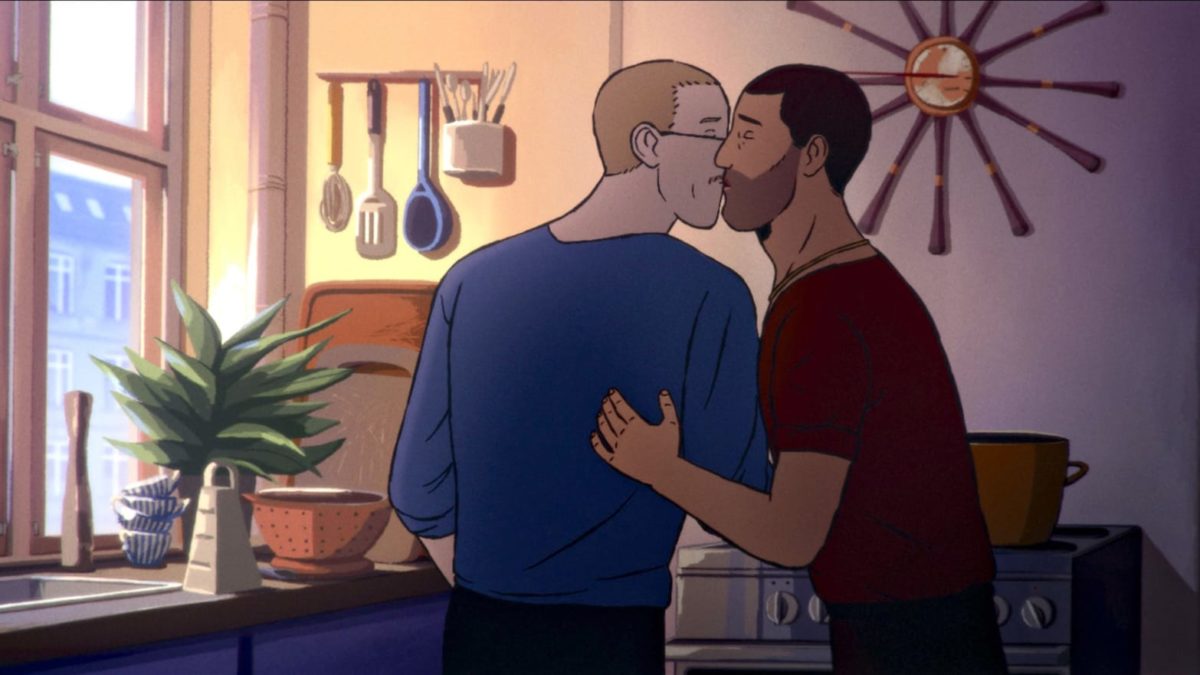
There have, after all, been a terrific many animated movies about deeply critical topics—many lately, from Persepolis to Anomalisa to Waltz with Bashir. Jonas Poher Rasmussen’s Flee now comfortably suits on this shelf of profoundly affecting movies. Certainly, Flee ranks as one of the uniquely memorable animated movies of this final decade: remarkably profitable as a examine of the refugee expertise, as a coming-of-age drama set towards a backdrop of concern and hazard, and as a tribute to at least one particular person’s means to outlive and even flourish. A unprecedented achievement. – Chris S.
45. Check Sample (Shatara Michelle Ford)

Written and directed by Shatara Michelle Ford, this stellar characteristic directorial debut issues a pair thrown right into a Kafka-esque chaos as they try to have a rape equipment administered. The night time earlier than, Renesha (Brittany S. Corridor) went out for drinks with a good friend and blacked-out after encountering two males at a bar. There may be a lot right here to suggest: lengthy, nerve-racking grasp photographs that elucidate each emotion; lead performances from Corridor and Will Brill that hardly really feel like performing; a spare screenplay that eschews judgment or presumption. Ford is a star and it’s thrilling to assume how far their profession will go. – Dan M.
44. The Tragedy of Macbeth (Joel Coen)

Joel Coen’s tackle the Scottish play unfolds nearly solely on units—sharply angled, streaked with shadows and shards of sunshine. It’s an method that marries theater’s immediacy with cinema’s narrative drive. Extra Dreyer than Bergman, extra Welles than Olivier, this is the sharpest Shakespeare adaptation in years, a hurtling descent into insanity with astonishing performances by Denzel Washington, Frances McDormand, and Kathryn Hunter. Richly layered black-and-white cinematography by Bruno Delbonnel meshes splendidly with Stefan Dechant’s spiky manufacturing design. – Daniel E.
43. Ema (Pablo Larraín)

Pablo Larraín’s dour tackle Princess Diana is getting all the eye this yr, for higher or worse, nevertheless it’s his different characteristic, Ema, that deserves it. The neon-drenched Chilean mountain-town odyssey reveals its winding narrative piece by piece, ultimately displaying its true kind: a thriller love story about experimental dance, autonomy, artwork, and a regretfully returned adoption. It premiered at Venice in 2019, one among many movies that’s been largely forgotten due to its lengthy keep in distribution limbo. However with a horny reggaeton-centric rating by famend electronica artist Nicolas Jaar and Mariana Di Girolamo’s unforgettable efficiency, take into account it unmissable. – Luke H.
42. The Lady Who Ran (Hong Sangsoo)

In lots of Hong Sangsoo’s movies, feminine characters are pressured to hear as listless, drunken males endlessly whine about their relationship issues {and professional} failures. The Lady Who Ran flips the script by focusing its narrative nearly solely on a trio of calm, reflective conversations between girls who politely dance round confrontation. Favoring breezy, dialogue-heavy scenes, every phase will get disrupted by a disgruntled man clamoring for underserved respect. However this delicate masterpiece doesn’t dwell on such hurtful distractions. As an alternative it features as a loving respite from the exhaustion they produce, as in a phenomenal closing scene the place one character avoids rehashing previous heartbreak and ventures again right into a movie show to benefit from the tranquil ending of a movie she’s simply completed. Typically cinema actually is the one escape. – Glenn H.
41. All Mild, In all places (Theo Anthony)

Theo Anthony’s All Mild, In all places casts a wider focus than his wholly authentic debut Rat Movie whereas retaining the identical distinctive imaginative and prescient as he explores how technological breakthroughs (and pitfalls) in filmmaking have reverberated all through historical past to each embolden and trick our perceptions of perspective. To string these strands and see its modern-day results, his movie primarily appears on the engineering behind police physique cameras, the in depth use of these gadgets and different surveillance gear to assist officers in circumstances the place proof may in any other case come right down to solely verbal testimonies. Staggering in its expressive but concise means to discover a subject as pressing as rampant police violence and extreme surveillance from strictly technological views, All Mild forces viewers to query the veracity of every part that crosses their eyes. – Jordan R.
40. Cry Macho (Clint Eastwood)

Clint Eastwood has made movies in regards to the elegiac decay of the cowboy for many years. He’s a filmmaker fixated on concepts of his personal mortality, utilizing work to convey his regrets in life and create closing pictures that may hopefully outline his legacy. However Cry Macho represents a brand new spin on movies similar to Honkytonk Man and The Mule, accepting that one of the best ways to depart legacies isn’t via martyrdom, however making mild connections with those that keep behind. It might simply be seen as minor, however after a lifetime of adrenaline it’s great seeing the ultimate cowboy get pleasure from a dance and lift a hen whereas he nonetheless can. – Logan Okay.
39. Passing (Rebecca Corridor)

A triumph of a directorial debut. With a powerful command of a number of cinematic instruments, Rebecca Corridor (adapting Nella Larsen’s novel) creates a movie that, like its essential characters, performs alongside the sides of nuance and ambiguity. Its putting black-and-white cinematography tells a intelligent story about colour, obscuring or emphasizing Irene’s (Tessa Thompson) and Clare’s (Ruth Negga) pores and skin tones because the scene calls for, permitting them to maneuver between Black Harlem or white Manhattanite society as they need. However although they’ve a lot in widespread, Irene and Clare are practically precise reverse sides of the identical coin. They problem, love, and envy one another unexpectedly, and from this relationship of paradoxes Corridor attracts out an engrossing drama in regards to the intersections between race, class, gender, and need. Passing is lastly not about whether or not Irene and Clare move; it’s in regards to the penalties of once they do. – Jonah W.
38. Sluggish Machine (Paul Felten and Joe DeNardo)

A Swedish experimental-theater actress flees an ambiguously predatory friendship with an NYPD Intelligence agent, crashes on the upstate dwelling the place Eleanor Friedberger is rehearsing along with her band, and deflects poisonous alpha and beta masculinity with a Texan cowl story and accent, feeding right into a prevalent, ominous vibe of role-playing and surveillance. Shot on stunning, blotchy 16mm, Paul Felten and Joe DeNardo’s debut surfaces a New York bohemia—scattered throughout far-flung windowless residences, steeped till funky in radical narrative and political principle—that also feels underrepresented onscreen. It elides the distinction between creative-class caginess and security-state menace, with a self-cameoing Chloë Sevigny delivering a metaphysical audition monologue that nails down an general tone of ambient hostility. (Which, because of the sharpened and polished dialogue, is constantly hilarious, like stage fight with actual swords.) – Mark A.
37. Spouse of a Spy (Kiyoshi Kurosawa)

When you groove on its hazy (let’s say “dreamlike”) cinematography, the Fiftieth-or-so affirmation of Kiyoshi Kurosawa’s mastery—of kind the place each shot necessitates its place because it instructions focus, of narrative the place each revelation (co-scripted by Ryūsuke Hamaguchi) comes exactly because the movie calls for. But additionally at a baseline degree of craft destined to earn nice-enough responses for now; examine again in however-many years when it’s understood as a traditional. – Nick N.
36. The French Dispatch (Wes Anderson)

Simply after we assume Wes Anderson’s exhausted his quirky, colourful, dry, indie extravaganza filmmaking model, he proves us fallacious—once more. The French Dispatch sees Anderson using new methods as confidently and creatively as he does his previous favorites. The star-heavy movie takes us ceremoniously via the final problem of “The French Dispatch” through three separate tales instructed by their respective writers (Tilda Swinton, Frances McDormand, Jeffrey Wright). Almost each shot a masterfully thought of feat, all very exhausting to look away from. – Luke H.
35. Shiva Child (Emma Seligman)

All bets are off the second Danielle (a star-making flip from Rachel Sennott) realizes she doesn’t know whose shiva she’s strolling into. If she doesn’t know that, how can she start making ready for its potential company? Emma Seligman’s hilarious Shiva Child is as a lot a darkish comedy within the vein of Dying at a Funeral as it’s a nightmarish 77-minute panic assault. Danielle tries avoiding confrontation as usually as she inevitably seeks it out to push boundaries or escape the uncertainty of what may occur when she doesn’t (with Polly Draper and Molly Gordon hovering as mom and ex, respectively). It’s a whirlwind journey in direction of clarifying and accepting her personal private reality whereas enduring the emotional, psychological, and bodily duress born from avoiding it. Will embarrassment permit Danielle’s secrets and techniques to regulate her? Or will she acknowledge their inherent energy earlier than taking management as an alternative? – Jared M.
34. The Inexperienced Knight (David Lowery)

Stealthily 2021’s much more nuanced interpretation of humanity’s dropping battle towards the whims of the surroundings, David Lowery’s tackle the traditional Arthurian poem Sir Gawain and the Inexperienced Knight is extreme but spellbinding—cryptic, decadent, and surprisingly erotic. Dev Patel slides into one among this yr’s most salacious roles because the floppy-haired Gawain on a quest to return the blow he landed on Ralph Ineson’s Inexperienced Knight one yr prior. Beneath the medieval folktale simmers a contemporary allegory for misplaced religion, no match towards a pleasant foe that may retaliate tenfold towards humankind’s destruction. – Brianna Z.
33. Barb and Star Go to Vista Del Mar (Josh Greenbaum)

Although some have dismissed Barb and Star Go to Vista Del Mar as an prolonged SNL bit, it’s exactly this dedication to the bit (or, somewhat, quite a few bits) that makes the movie so endearing. Each scene within the Annie Mumolo- and Kristen Wiig-scripted movie about two middle-aged girls in culottes on trip is designed to ship one other ten jokes flying your method. Your mileage could fluctuate out of your humorousness, however there isn’t a single comedy this yr that’s as trendy, foolish, and surprisingly delicate as this one. – Juan B.
32. Mass (Fran Kranz)
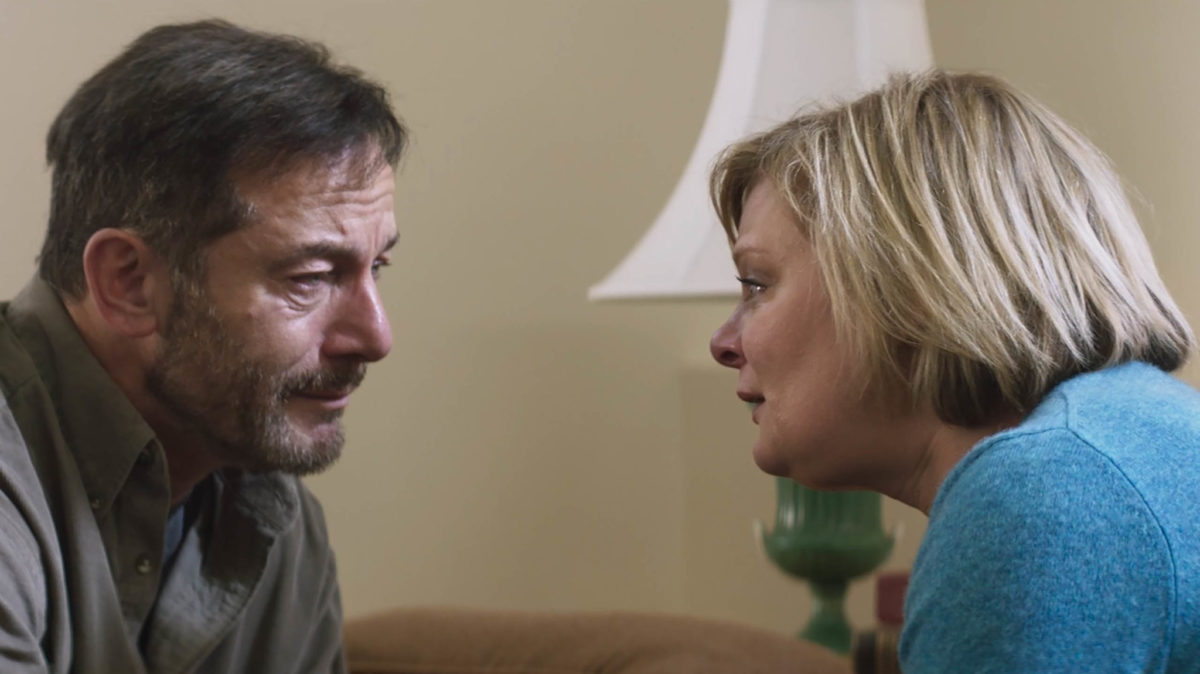
Fran Kranz, not solely an skilled actor but additionally a famous theater director, brings vulnerability from the stage to his debut movie Mass. By entrapping the viewers, very similar to the 4 victims of grief on the heart, he takes benefit of the medium with heartbreaking close-ups. With each motion and monologue due reverence is given for this delicate subject of ever-present threats of gun violence in American colleges. In grappling with the aftermath and characters’ desperation, a catharsis is fashioned by assembly collectively—a way of closure that’s wholly irrevocable and directed with a deft contact by Kranz, a brand new voice in American cinema we sit up for seeing blossom. – Margaret R.
31. Quo vadis, Aida? (Jasmila Zbanic)

One of the vital shifting and harrowing movies of the yr, Jasmila Žbanić’s Quo Vadis, Aida? reenacts the horrific Bosnian genocide via the eyes of a UN translator caught between the highly effective officers calling the photographs and the weak townspeople to whom she belongs. An interesting examine of energy and complicity that by no means glorifies violence, as an alternative coaching an accusing lens on those that wield energy to harm others. – Orla S.
30. Unhealthy Luck Banging or Loony Porn (Radu Jude)

After a intercourse tape is launched on-line, a schoolteacher (Katia Pascariu) goes on an odyssey via sunny Bucharest. She later faces a kangaroo court docket made up of her colleagues and friends. Within the center many different issues occur. Combining narrative and archival filmmaking with components of theatre, political allegory, memes, and satire, Radu Jude—maybe probably the most idiosyncratic filmmaker to emerge from the Romanian New Wave—created one of many strangest, most singular movies of the yr in Unhealthy Luck Banging or Looney Porn. It additionally gained the director a Golden Bear, an acknowledgement as overdue because it was well-deserved. – Rory O.
29. C’mon C’mon (Mike Mills)

With its NPR-style milieu and what could be anathema for critics––a deeply sentimental story about loss and forgiveness––Mike Mills’ C’mon C’mon overcomes the percentages. As in his script, honesty and decency by some means prevail, aided by Woody Norman’s unfussy work as nine-year-old Jesse and Robbie Ryan’s intimate, meticulous cinematography. C’mon C’mon dares you to hate it, understanding simply how exhausting it’s to show away from a grieving little one. – Daniel E.
28. Benedetta (Paul Verhoeven)

Paul Verhoeven’s newest is each an irreligious movie and one with honest conception of the sacred, mischievously proudly owning the contradiction. Stripped of budgetary largesse, and even among the status imparted by Isabelle Huppert and the bougie French setting of Elle, the Dutch grasp comes up with one among his bluntest, most aggressive broadsides towards institutional corruption and energy. Verhoeven stares down the Catholic Church and Holy Roman Empire while venerating yet one more robust girl within the mystic Benedetta Carlini (Virginie Efira). The director’s personal private Jesus, she’s an apex predator in––to cite Jacques Rivette’s reward of Showgirls––a “world populated by assholes.” – David Okay.
27. Summer season of Soul (…Or, When The Revolution May Not Be Televised) (Amir “Questlove” Thompson)

Each an act of discovery and rectification of historical past, Summer season of Soul revives and restores an explosion of musical expertise and collective reminiscence. In his directorial debut, Amir “Questlove” Thompson expertly cuts collectively pristine, beforehand forgotten footage from the 1969 Harlem Cultural Competition, a free out of doors live performance sequence that attracted 300,000 individuals and featured the perfect gospel, blues, and R&B singers alive. Past showcasing the pageant’s stars, Thompson navigates the intersection of the nation’s racial and social revolutions, letting marginalized voices do all of the speaking whereas Stevie Marvel, Nina Simone and Mavis Staples (to call a number of) do all of the preaching. It’s groovy, highly effective bliss. – Jake Okay.S.
26. The Beatles: Get Again (Peter Jackson)

The best present a music or historical past lover can obtain, Peter Jackson’s three-part, eight-hour documentary is a Frankensteining of all of the footage captured of the Beatles creating Let It Be, the penultimate album they recorded and closing they launched. For these in love with the 4 lads from Liverpool, each second is a treasure. It’s wild to have this type of entry, to witness one of many greatest moments in music (and cultural) historical past so clearly, so comprehensively. To see how the Beatles formed songs, got here up with lyrics, messed round within the studio, obtained annoyed with one another, or allowed artistic enter from others. To see how a lot they nonetheless liked one another on the finish, however how actually they felt pulled in their very own instructions. To cap the blissful expertise, Jackson sends us off with the total Apple studios rooftop live performance, the final stay present the Beatles ever performed collectively—an indelible delight. – Luke H.
25. Evangelion: 3.0+1.0 Thrice Upon A Time (Hideaki Anno)

A reclamation undertaking and an opportunity to forge a brand new path ahead, that is Hideaki Anno’s most important and spectacular movie since Finish of Evangelion, the film this movie primarily abridges. Evangelion has at all times rooted itself in Anno’s tough upbringing, and he carries his trauma into his artwork as a method to discover hope amidst chaos. Although redoing one thing you’ve already achieved is commonly a futile endeavor, Anno is so in tune with the material of this sequence that transporting it into a brand new century, for a brand new era comes naturally. If it was a rocky highway reaching the top of the Eva Rebuild, this masterpiece justifies all. – Soham G.
24. What Do We See When We Take a look at the Sky? (Aleksandre Koberidze)
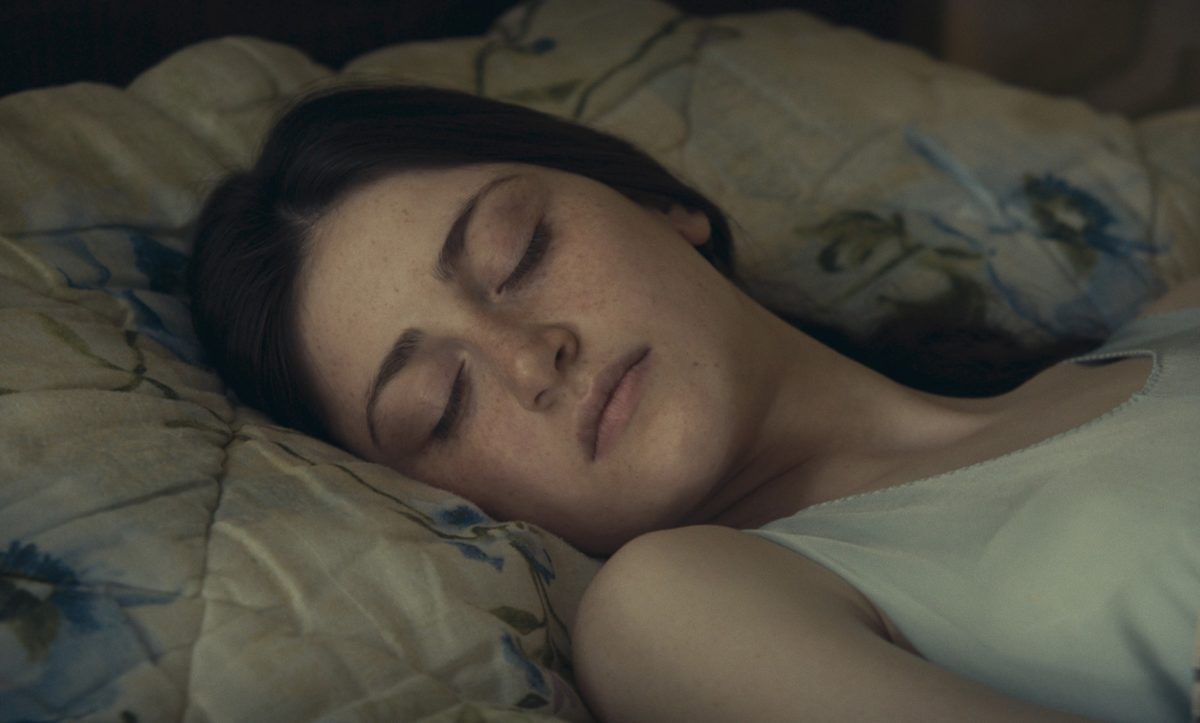
It’s not hyperbolic to counsel Alexandre Koberidze’s sophomore effort is without doubt one of the most authentic, alive, astonishing movies to return round in years. A younger Georgian couple meets cute solely to have their romantic plans derailed after every wakes up the subsequent morning wanting like utterly completely different individuals. The mysterious, affecting twin journey that unfolds is lovingly indebted to the rhythms and charm notes of silent cinema, town symphony, romantic comedy, and work of Manoel de Oliveira. Finally, Koberidze’s all-timer proves there’s room for kindness and narrative reinvention within the face of a brutal world, “as a result of every part occurred the best way it needed to occur.” – Glenn H.
23. Zeros and Ones (Abel Ferrara)

There’ll by no means, ever be must make the definitive COVID film, and absolutely Abel Ferrara—who I as soon as noticed reply to an over-involved query with “yeah all of us noticed the film bro”—would take my declare with, at greatest, a shrug and grunt. However nothing’s so transposed the sensations of being alive in spring 2020—wandering empty streets that make you are feeling just like the final man alive, each meet-up with buddies carrying the air of a clandestine operation, failing to compartmentalize bits and items of data from a telephone—and particularly nothing’s translated them to a story centered elsewhere. Perhaps elsewhere. I stay unsure what really occurred in Zeros and Ones, however reminiscence of the Vatican (?) blowing up and Ethan Hawke’s twin brother screaming patriotic agitprop. Who cares: a brand new traditional, and already evidently one of many biggest movies from a terrific American artist. – Nick N.
22. Within the Heights (Jon M. Chu)

Arriving on the scene on the optimistic a part of the yr (Sizzling Vax Summer season), Jon M. Chu’s Within the Heights is without doubt one of the greatest musicals from a yr with a number of good ones. A colourful celebration of life in Washington Heights, the story is led by Anthony Ramos’ Usnavi, a bodega proprietor with goals of returning to a romanticized model of the Dominican Republic, although he later comes to understand the island of your goals is the place you make it. Tailored from Lin-Manuel Miranda’s award-winning play, the movie isn’t merely a love letter to New York but additionally one which addresses multicultural tensions, gentrification, and neighborhood constructing in a much more refined method than both West Aspect Story. It feels each intimate and huge, a celebration of sizzling summer time days, exhausting work, and the encounters individuals have once they stay in neighborhoods, not heroically sealed high-rises. Chu by no means misses a beat, from the opening showstopper that celebrates the easy act of getting up and going to work within the metropolis to a joyful Busby Berkeley homage in a public swimming pool on the most well liked day of the yr, whereas extra intimate, gravity-defying numbers happen when time appears to face nonetheless. Within the Heights is a stunning, masterfully crafted movie that got here simply after we wanted it. – John F.
21. The Matrix Resurrections (Lana Wachowski)

A lot has been made in regards to the methods Lana Wachowski has used the resurrection of Neo and Trinity to deal with intense grief in her life, utilizing fiction as a method to give her what actuality can not and by no means will. Simply as resonant is the connection between Keanu Reeves and his character Neo—the actor endured the same trauma in his life, dropping his new child daughter and associate inside a pair years of one another. His arc as Neo holds new weight: each actor and character reckon with the opportunity of getting a second likelihood with a liked one who has left this world, Neo making the selection to interrupt materials of actuality itself to see somebody’s face once more. The Matrix Resurrections features as an act of therapeutic for each actor and director, but additionally anyone who’s misplaced somebody and would do something to see them once more. A daring, romantic, weak, stunningly bold blockbuster. – Logan Okay.
20. The Final Duel (Ridley Scott)

The Final Duel is an incisive, biting reminder of the grotesque methods through which each pillar of society works in service of the patriarchy. The movie’s Rashômon-esque accounts of the rivalry and rape at its heart serve to not dispute the sufferer’s accuracy, however spotlight how males try to rationalize such horrors and command the narrative. By some means, Scott juggles tones menacing and playful with a solid in peak kind, together with an awe-inspiring Jodie Comer and delightfully hammy Ben Affleck. All of which culminates in one of many extra brutal motion set items in latest reminiscence—the capstone on a superbly crafted, nuanced piece of leisure. – Conor O.
19. Parallel Moms (Pedro Almodóvar)

The oft-operatic Pedro Almodóvar composed an totally tender chamber piece with Parallel Moms, a movie that defies the Spanish grasp’s traditional scope by turning into a lullaby of kinds whispered by Penélope Cruz’s Janis, a photographer who will do something to maintain her toddler from being taken away. Pedro and Pé discover the that means of motherhood by contrasting it with the ache felt by their mom, Spain, because it continues mourning the lack of many youngsters taken by Franco’s dictatorship—youngsters whose moms won’t ever get to embrace once more. – Jose S.
18. Undine (Christian Petzold)

In 2018 Christian Petzold’s masterful Transit took a narrative from World Conflict II and dropped it in modern-day Marseille, a daring conceit that felt like watching ghosts of the previous echo via the current. With Undine, Petzold continues merging previous and new so as to add layers of complexity to his storytelling. The Berlin-set Undine reunites Transit‘s Paula Beer and Franz Rogowski in a story loosely based mostly on the parable of the water nymph (recognized most famously via the story of the Rusalka and the Little Mermaid), taking part in out this time as a tragic romance between a historian and a diver. Very like Transit‘s straddling of interval piece and modern-day ghost story, Undine establishes itself in a setting of fixed upheaval and transition, with Beer’s historian centered closely on the ever-changing city growth of Berlin over the centuries. It’s via this method that Petzold’s grounded course takes stunning turns, fashioning a primary setup of two individuals falling in love (a little bit of romcom slapstick thrown in for good measure) and making from it a swooning, fantastical romance. – C.J. P.
17. Spencer (Pablo Larraín)
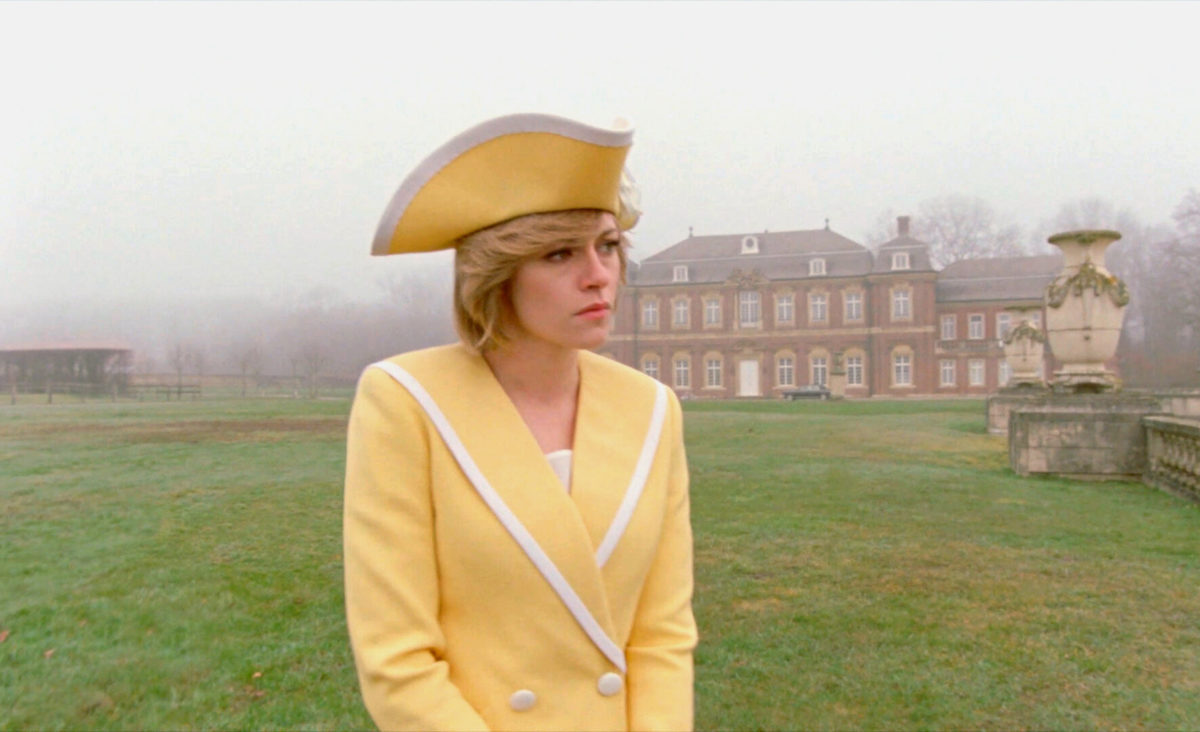
Over the course of his various filmography, Pablo Larraín has develop into the reigning raconteur of public figures wrestling with the constraints of their public picture, and of girls who refuse to suit into society’s straightforward definitions. Spencer is a wedding of each impulses in superb kind. Kristen Stewart delivers a career-best efficiency, disappearing utterly into the function and bringing forth a Diana Spencer we’ve hardly ever seen earlier than. She performs each second with such uncooked ache and gravity that it utterly dominates every body, steals each scene she’s in. Round Stewart’s gorgeous efficiency Larraín deftly mingles dream sequences and actuality, weaving us an unforgettable imaginative and prescient of somebody trapped in a nightmarish model of a fairy story and combating with every part she has to search out her method again to herself. – Jonah W.
16. Titane (Julia Ducournau)
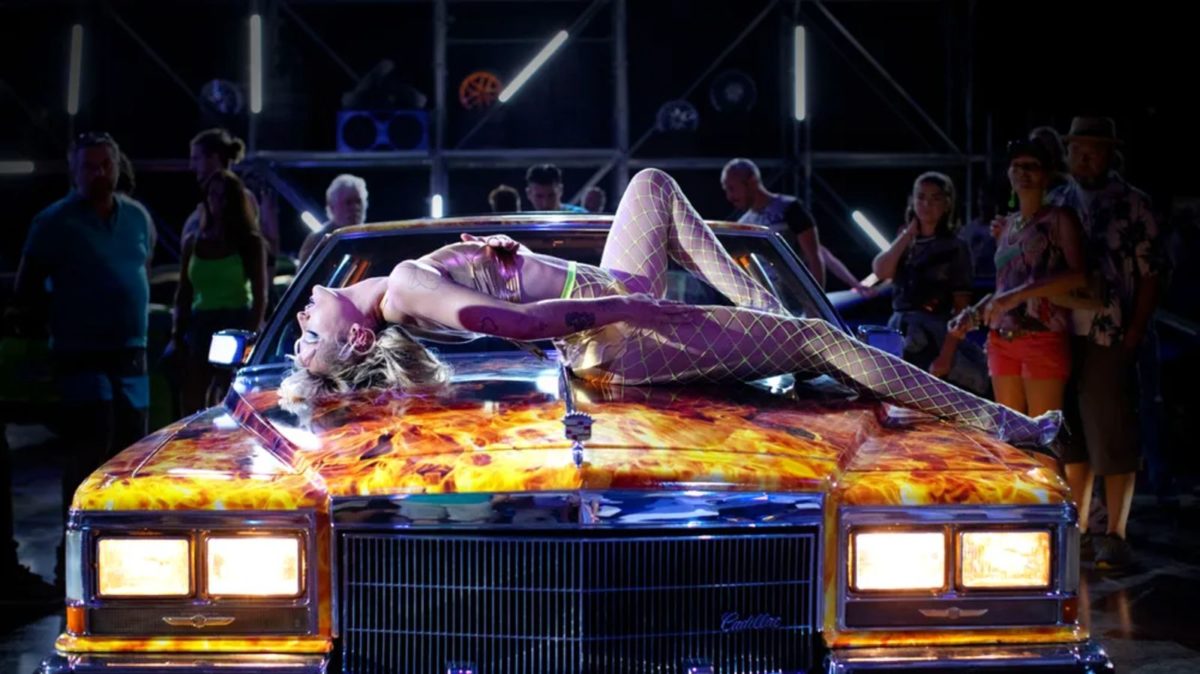
You might fill the size of 100 firetrucks scribbling out phrases on Julia Ducournau’s physique horror meets darkish comedy meets homoerotic rave film meets a few thousand different issues, every of them as fascinating and totally realized because the final. Titane morphs and evolves via myriad themes throughout its runtime, however the facet I discover myself returning to most is how Ducournau shatters typical understandings of gender, ripping open these societal packing containers we’ve been positioned in to deal with questions on what’s masculine, what’s female, and what these phrases even imply to start with. By her physique horror, she destroys the flesh to take away these ingrained stereotypes and reveal one thing solely new within the course of. Watching Titane as a non-binary particular person myself, it tapped into how I see the world in a method no different movie has achieved earlier than, making me really feel actually seen and validated. Such a uncommon, stunning present to have. – Mitchell B.
15. Bergman Island (Mia Hansen-Løve)
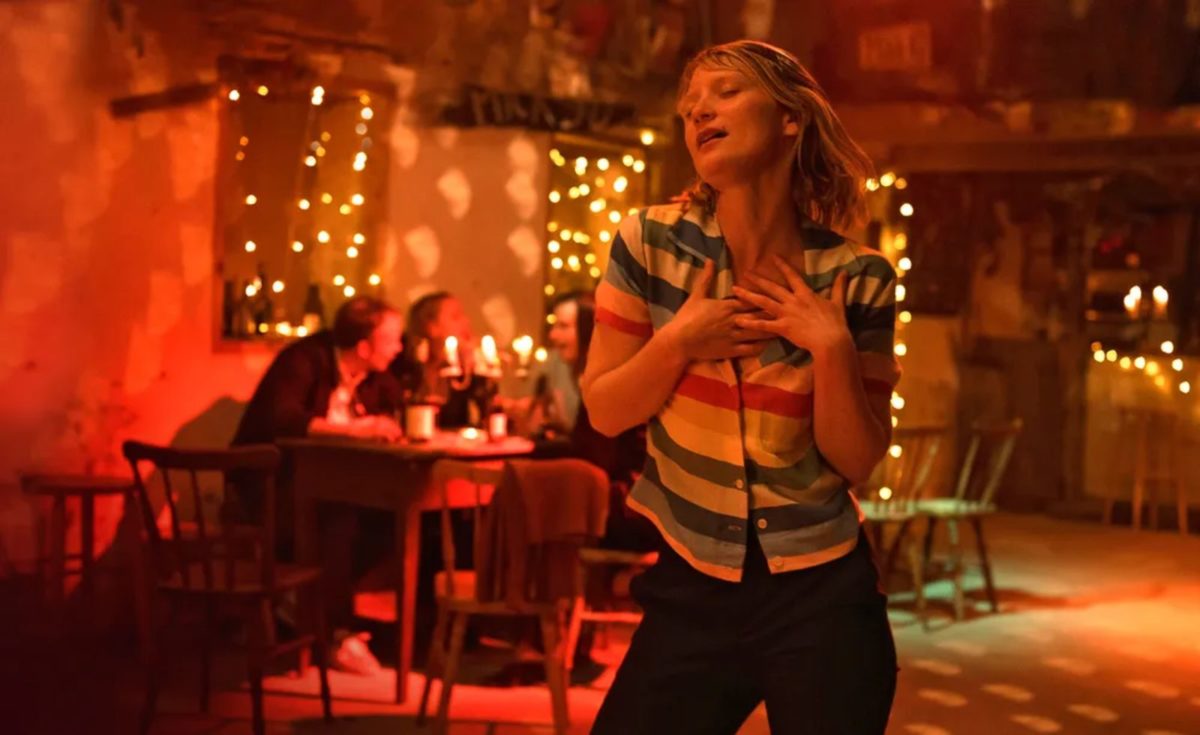
Mia Hansen-Løve’s Bergman Island is kind of transparently a type of self-portrait: it’s a few filmmaker, performed by the good Vicky Krieps, in a relationship with one other filmmaker, simply as Hansen-Løve was with Olivier Assayas. However way more than that. It’s a movie about the pains of creating private artwork, but additionally its launch as a method to reexamine instances passed by. Bergman isn’t a lot an affect on the movie as he’s a looming shadow for Krieps’s character, who seeks one other―maybe quieter, extra optimistic, much less extractive―method of creating motion pictures than the Swedish legend. – Orla S.
14. Dune (Denis Villeneuve)

So much rode on the success of Denis Villeneuve’s adaptation of Frank Herbert’s sci-fi touchstone—long-awaited, and a tentpole launch after a torrid pandemic-hit summer time for theaters. May Dune entice cinemagoers again, even because it competed with a simultaneous launch on HBO Max? Not only a movie that proved there’s life for multiplexes in a COVID world, the Timothée Chalamet-led house epic additionally confirmed Hollywood might nonetheless produce and excel at brainy blockbusters with operatic visuals, ear-bursting sound—courtesy Hans Zimmer’s hypnotic rating—and a various ensemble bringing its A-game. Fortunately sufficient of us noticed it on the large display screen—Warner Bros. has greenlit half two for 2023. – Ed F.
13. Petite Maman (Céline Sciamma)

Its fantastical premise however, Céline Sciamma’s time-traveling story is a feat of humanist filmmaking rooted within the realest, purest feelings. In Petite Maman‘s depiction of a younger thoughts making an attempt to make sense of life’s many mysteries it glows with insights about rising up and letting go. With such poignant writing that renders any particular results pointless, it additionally reminds you that finally we crave magic to not unlock multiverses, however simply be capable of see somebody as soon as once more, to say goodbye. A profoundly shifting, pint-sized marvel. – Zhou-Ning Su
12. Days (Tsai Ming-liang)

Has any dwelling actor given extra of themselves than Lee Kang-sheng? A 3-decade corpus with Tsai Ming-liang doubles as a chronicle of his personal: youthful and spry in Rebels of the Neon God; unbearably tortured in The River; sexually voracious in The Wayward Cloud; pushed to its breaking factors within the Walker sequence; and by the purpose of Days merely weathered from time. Lee is that uncommon actor to convey worlds of feeling in a large shot and flash microscopic, instant response with an intense peer into his eyes. His physique is the instrument, Days one other of its masterpieces. – Nick N.
11. The Memento Half II (Joanna Hogg)

When Joanna Hogg launched her meditative bildungsroman The Memento, impressed by her personal younger maturity attending movie college and falling in love, she captured the indelible feeling many burgeoning artists have gone via: one among isolation and vulnerability, masterfully conveyed by Hogg’s creator avatar Julie (Honor Swinton Byrne). The structurally bold but nonetheless private Half II is the metamorphosis of those emotions right into a ardour to create. Hogg conveys that to be able to stay we should inform tales, if solely to indicate that we’re by no means actually alone on this world. It’s a masterful duology destined to be adored by artists and audiences alike. – Margaret R.
10. Annette (Leos Carax)
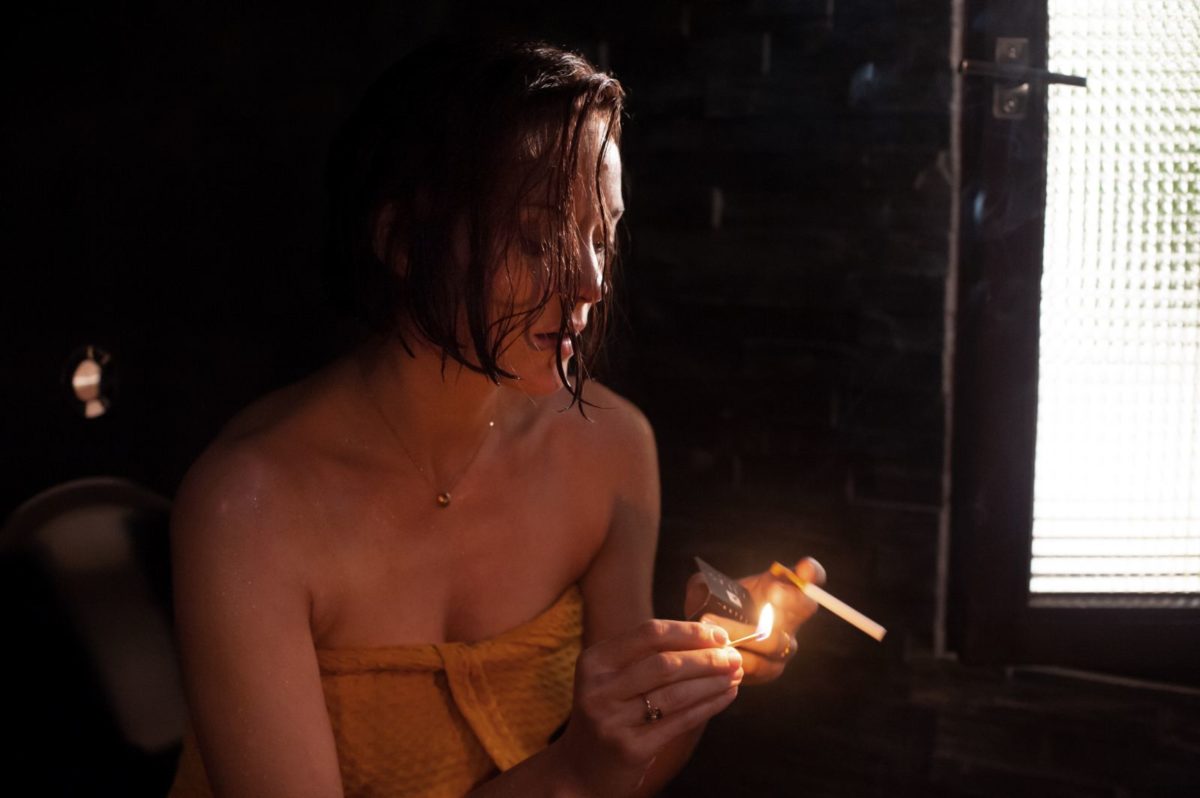
Excessive-wire tweeness and lacerating barbs in full impact, Leos Carax and Sparks’ wackadoodle rock-pop opera is a balancing act for the ages. I need to admit that after seeing the movie I needed to ask my viewing group if it’s potential Carax was utilizing Annette to confess that he murdered his former love Yekaterina Golubeva; and we additionally hummed the perfect songs. Perhaps it’s simply me, however that’s the mark of a movie to final a very long time. – Ethan V.
9. Purple Rocket (Sean Baker)

Few administrators on the planet are making movies that really feel as lived-in as Sean Baker. Maybe that’s the reason Tangerine, The Florida Venture, and Purple Rocket resonate so strongly. Greater than verisimilitude, although, it’s Baker’s understanding of the complexities of human nature that pushes his work to the extent of excellence. Simon Rex’s Mikey Saber, an ex-porn star whose eye for a hustle is ever-present, behaves precisely how he ought to—uncaringly damaging to himself and others, however with a lovable grin. A part of the enjoyment we derive from watching Purple Rocket is our realization that Mikey goes to make the egocentric transfer each single rattling time. So very, very fallacious; so very, very 2021. It cements Baker as one among cinema’s brightest lights, and incorporates a lead efficiency that is still endearing even when Mikey is at his worst, to not point out a powerful debut from Suzanna Son. In its closing sequence, Rocket reveals Mikey to be one thing uncommon: a personality utterly true to himself. Deluded, however true. Thus Purple Rocket is greater than a comedy. It’s a fashionable traditional exploring the failings and needs of a person who in his relentless selfishness and overwhelming confidence is a quintessential American. Would possibly sound loopy, nevertheless it ain’t no lie. – Chris S.
8. The Card Counter (Paul Schrader)

On this late interval of an almost 50-year profession, Paul Schrader continues delivering a few of his most important work. After First Reformed grappled with local weather nervousness and company greed, his newest “God’s Lonely Man” character examine is a prickly Conflict on Terror postmortem, its secretive central determine (Oscar Isaac’s William Inform) a stand-in for a rustic decided to repeat previous atrocities. The Card Counter is without doubt one of the yr’s angriest works, and one among its greatest––although I nonetheless can’t fairly fathom how a movie as scathing in its worldview discovered its method onto Barack Obama’s record of 2021 favorites. – Alistair R.
7. West Aspect Story (Steven Spielberg)

Go away it to the grasp. We didn’t want a remake of a traditional; we didn’t actually need a remake of a traditional. And but. Steven Spielberg’s long-in-the-making re-interpretation of West Aspect Story is his greatest movie in a decade, arguably the perfect by anybody this yr. Lush colour, vibrant units, and extra star-making performances than you might rely on one hand, this factor bristles with life. Janusz Kaminski shoots the movie like he’s making an attempt to get out of the best way of Justin Peck’s stunning choreography. Without delay an ode to the unique movie and a blistering new adaptation, West Aspect Story is a marvel. – Dan M.
6. Licorice Pizza (Paul Thomas Anderson)

Paul Thomas Anderson’s raveled interval story of the quasi-romantic friendship between precocious 15-year-old Gary Valentine (Cooper Hoffman) and immature, floundering 25-year-old Alana Kane (Alana Haim) brings the LA native again to his sun-kissed San Fernando roots. Hoffman and Haim, of their characteristic debuts, not solely lead this movie untethered to a big-name actor, however carry it with the benefit of seasoned performers. Licorice Pizza is much less a typical love story than a lyrical portrait of the skinny, fragile line between adolescence and maturity; of two individuals with one foot in a single world and one foot within the different, intertwining someplace within the center on the most imperfect time. – Brianna Z.
5. The Worst Particular person within the World (Joachim Trier)

Opening on a golden shot of Oslo, with Cannes Greatest Actress winner Renate Reinsve filling the middle of the display screen as late-20s Julie, Joachim Trier’s The Worst Particular person within the World thrives on the messiness of younger maturity. Trier finds understanding inside moments of overwhelming feeling, impulsion introduced on by the concept of stasis—a felony concept to these, like Julie, who don’t have all of it discovered. The Norwegian director celebrates that chaos. Her love burns shiny and burns out, sequences of time stopping and hallucinogenic journeys—together with naturalistic chapters watching the passing moments inside somebody’s life, like a weekend getaway, work occasion, or dad or mum’s inaction. A world-class Reinsve holds all of it along with some assist from an excellent Anders Danielsen Lie, bringing lightness and solemnity to each breath, balancing this romantic comedy with a real, reflective efficiency amidst Trier’s most accessible work. – Michael F.
4. Memoria (Apichatpong Weerasethakul)

The place else if not Colombia might Apichatpong Weerasethakul set his first movie exterior native Thailand? The land that birthed magical realism appears eerily acquainted in Memoria, bristling with the identical otherworldly magnificence that made the director’s Thai works dance between actual and supernatural. As its predecessors, Memoria mines the subterranean; fueling Tilda Swinton’s quest to know the thriller behind an ominous thud haunting her voyage via the Andes is an curiosity in recollections, their suppression and excavation. Unmoored from any semblance of plot and unspooling as an alternative as a group of incandescent vignettes, every its personal micro-film, it’s a quietly disquieting meditation the place lengthy, static takes double as rooms you possibly can wander into at your individual tempo. A movie that embeds you so efficiently in its reverie that stepping out of it might probably go away you as unsettled as nourished. – Leonardo G.
3. Wheel of Fortune and Fantasy (Ryūsuke Hamaguchi)

Ryūsuke Hamaguchi’s first masterpiece of the yr, Wheel of Fortune and Fantasy, is an endlessly playful and creative triptych. Exploring the thorniness of affection, sparks of connection, and mistaken identities throughout three gorgeous vignettes, Hamaguchi’s talent at writing dialogue that’s as entertaining as it’s shifting has by no means been sharper. On any given day my most popular of the three shorts modifications, however there’s definitely no funnier or stunning sequence in cinema this yr than revenge gone awry between Nao (Mori Katsuki) and Professor Segawa (Shibukawa Kiyohiko). – Jordan R.
2. The Energy of the Canine (Jane Campion)

Jane Campion works on the nexus between intercourse, energy, creativity, and misogyny. With the tense however delicate interval western The Energy of the Canine, her first characteristic since 2009, she examines a chilling form of love quadrangle. We’re launched to Phil (Benedict Cumberbatch), a taciturn and closeted rancher haunted by the reminiscence of a cowboy who groomed him way back. Remoted however abusive, he clings to––and denigrates––his quietly empathic brother George (Jesse Plemons). However when George marries a humble widow (Kirsten Dunst), threatening the sanctum of their Montana manse, Phil wages psychological warfare towards the girl and her effeminate teenage son (Kodi Smit- McPhee). With help from cinematographer Ari Wegner and composer Jonny Greenwood, Campion asks us to query the character of villainy. Her pictures are without delay tender and smoldering, fearful and visceral. At all times put on your gloves. – Robyn B.
1. Drive My Automobile (Ryūsuke Hamaguchi)

A completely bewitching, irreducible movie, Drive My Automobile accumulates its overwhelming emotional weight from innumerable components: the ever-shifting visage of Hidetoshi Nishijima; the stoic intimacy of Tōko Miura; the revolving supporting solid, every determine extra distinct and transfixing than the final; the relaxed counterpoint of Eiko Ishibashi’s rating. What Ryūsuke Hamaguchi has achieved right here is nothing in need of miraculous, a synthesis of all these components to create one thing each supremely cathartic and frequently tantalizing, totally delivering on its specific narrative throughlines whereas capturing all method of mysterious routes that always transfer into the good unknown. – Ryan S.
[ad_2]
Source link